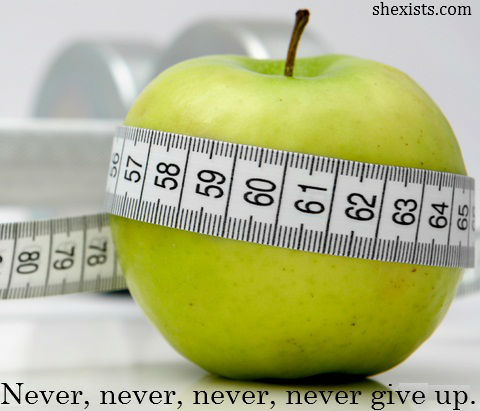Interval Training for Fatloss - Answers to the 5 Most Common Questions
In the following text I have answered the five most commonly asked questions I get about interval training for fat loss.
1. What is interval training? Interval training is a training protocol in which you alternate periods of work at higher intensity (usually refferred to as work or harder intervals) with periods of rest or work at lower intensities (usually referred to as rest, recovery or easier intervals). The words higher and lower intensity are relative to each other. You sometimes see term moderate intensity. This of course is between high and low intenisty and can therefore be used in the higher intensity interval in a program where the lower intensity is complete rest or very low intensity or it can be used as the lower intensity in an interval program where the higher intensity is near maximum. This can sound a bit confusing, so for more accurate indications of intensity, we usually use the actual heart rate in percentage of your maximum heart rate. HARD intensity then is around 85-95% of your maximum heart rate, MODERATE is around 70-80% and EASY is below 65% of your maximum heart rate. You can estimate your maximum heart rate in beats per minute by subtracting your age from the number 220. So if you are 45 years old, your estimated maximum heart rate is 220 - 45 = 175 beats per minute
2. What type of exercise activity should I choose? Interval training can be done with any kind of physical activity. It doesn't have to be just running or biking. Go for something that serves your goal. Interval training is specific, meaning that you improve what you solicitate. If you want to be a faster runner, then choose running as your exercise activity, rather than swimming, as the physiological adaptations from the interval session will take in place in the muscles and movement patterns that you worked. If you want to lose body fat you should chose an activity that involves the whole body or at least the biggest muscle groups as this will have a greater impact on your total metabolism than working an isolated part of the body. Secondly, you should consider the convenience factor. If you choose an activity that you have easy access to, you are more likely to get your session done, than if have to drive very far or you have to set up whole bunch of equipment. If for instance you have a trampoline in your garden you might simply do your interval workout on the garden trampoline. If you want to check that out, I have actually made a dvd with an interval fat loss program to do on the outdoor trampoline.
3. How do you do interval training? You need to be able to measure the length of the intervals. You can always use a stopwatch, but an interval timer is a great tool. The interval timer can be set to beep at specific interval lengths according to your program and that way you don't have to constantly look at your watch to see if time is up. (See ressource box below for link)
4. How should I structure my interval training program? To determine which length of intervals to go for - such as alternating intervals of 30 seconds hard followed by 60 seconds easy or 10 seconds hard followed by 10 seconds easy, you will also have to have your goal in mind. If you want to train speed and acceleration you should stick to the shorter intervals with longer rest intervals, so you are fresh at the beginning of each interval. For fat loss solutions you should keep the rest/work interval between 1:1 and 1:3 and let the work interval of high intensity last 30 seconds or more, so that you get your heart rate up. However, you will have to work your way progressively up to being able to going at near maximal intensity. You do this by progressively increasing interval length and/or intensity over a few weeks. And don't forget to do a warm up first every time!
5. What is the difference between interval training and cardio? Now you might think that why not quit the rest intervals and just stay at high intensity for the whole session. Like in a steady rate cardio session. The problem with this is that if you were to keep the intensity really high you would maybe last 3-4 minutes before complete exhaustion, where as if you break the time spent at high intensity down to alternating intervals of 60 seconds followed by 2 minutes recovery you will be easily be able to work a total of 3-5 times longer at high intensity (i.e. 10-20 minutes at high intensity). This is because you use your anaerobic energy systems to create energy for these short intervals and these systems can recover (at least partially) during the recovery interval, so you have ressources to go for another high intensity interval. What happens when you do steady rate cardio is that you automatically adjust your intensity level so that you can keep going for the entire session and your aerobic system provides most of the energy needed. When comparing the two for fatloss efficiency you shouldn't just look at the total amount of calories needed to do 90 minute cardio sessions or a 30 minute interval session. You need to take the induced changes at the hormonal levels into account as well. When you work at near maximal effort/intensity there will be an increase in certain hormones that are actually very beneficial with regards to fatloss both during the workout and for a long time after. You don't get that quality response from the slower steady rate cardio training. To sum up, this not only means that you spend less total time working at high intensity when you do traditional lower intensity aerobic training. It also means that you don't get the same long lasting fatloss benefits at the metabolic level as you do with interval training for fat loss.
Copyright (c) 2009 Anja Bolbjerg
-
Weight Loss Plans - Fitness Program Goals
A good fitness program is one that is designed specifically around the
-
Easy weight-loss - without a diet!
There are many different reasons why someone may want to lose weig
-
Body Types - Do You Like How You Look?
Body Types - Do You Like How You Look? CAN YOU MORPH INTO A DIFFERE
-
Managing Cravings With EFT
There are several ways to manage cravings. You can: Attempt to stop e
-
Can Drinking Ice Water Help Boost Metabolism? (Video)
Whether your weight loss strategy involves going low carb, Paleo
-
The Evolution Of Healthy Diets
First there is S.A.D. (standard American diet). This diet makes peo
- DON'T MISS
- Barefoot Running: When Its Not a Good Idea
- How To Lose Weight God's Way
- Weight Loss Tips When You Don’t Know Where To Start (Or Need To Start Over!)
- Body Composition And Weight Loss They Are Related
- Natural Weight Loss – It’s Easier Than You Think!
- Which Weight Loss Methods and Merchandise Are the Greatest?
- Direct Correlations Between Eating Healthy And Weight Loss
- Middle Aged Men Lose More Hair than Weight; Let’s Change It
- The Easy and Natural Way to Weight Loss
- How To Get Weight Loss Vitamins




